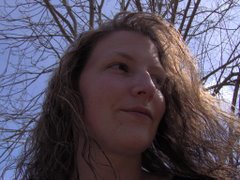SUPPLIES:
- 6-8 oz honey (preferably local)
- 1 gallon white wine
- 6-7 citrus or spice tea bags
- large glass stockpot
- glass bottles or jars
PROCEDURE:
- Mix honey, wine, teabags and fruit in large stockpot
- Bring to a boil for 1 minute
- Simmer for 2-3 minutes
- Let cool
- Transfer to glass bottles or jars
- Refrigerate for 3 days
Melon Sorbet
SUPPLIES:
- 4 cups melon, cut into small pieces
- 1/2 cup granulates superfine sugar
- 1 tsp lemon juice
- (optional: 1 tsp dark or spiced rum)
- blender or food processor
- coarse siece
- wire whisk
PROCEDURE:
- Puree the melon in a blender or food processor and strain through the seive
- Combine 1/2 cup of melon with the sugar and bring to a boil, stirring frequently
- Remove from the heat and add the remaining melon, lemon jiuce and mix well.
- Cover tightly and freeze overnight (If adding the rum do it just as the sorbet is about to feeze)
- Spoon into bowls or refrigerated melon rinds. Garnish with berrise and honeyed whipped topping (see next).
Honey Whipped Topping
SUPPLIES:
- 2 oz cream cheese
- 2 tbs honey
- 1/2 cup whipped heavy cream
- wire whisk
PROCEDURE:
- Whisk the cream cheese and honey together until smooth
- Fold in whipped cream
- Refrigerate.
Lughnasadh Pie
Blueberries, also known as fraughans, herts or bilberries, are connected with the ancient festival of Lughnasadh. In later years, the Sabbat came to be known as Garland Sunday, a time when the whole village would gather for a day of singing, dancing, courting, feasting and picking wild blueberries.
SUPPLIES:
1 cup sugar
¼ cup flour
Grated zest of ½ lemon
Salt to taste
5 cups of fresh blueberries
Pastry for 9 inch, 2-crust pie
Juice of one lemon
PROCEDURE:
1 tablespoon butter Combine sugar, flour, lemon zest and salt to taste. Add blueberries, tossing to thoroughly coat fruit. Pour mixture into a pie crust drizzle with lemon juice and dab with butter. Place top of pie crust over pie; seal and flute edges. Cover edge of pie with foil. Bake for 20 minutes at 375 degrees. Remove foil and bake for another 25 minutes. Cool on a wire rack.
See also: The Festival of Lughnasadh
*From Celtic Folklore and Cooking by Joanne Asala. Llewellyn Publications. 2001. http://www.irelandsown.net/pie.html
Lammas Cookies
These sunny cookies are eaten at feasts honouring the Sun God, Lugh.
SUPPLIES:
1 cup butter, softened
1 cup sugar
3 eggs
2 cups flour
¼ cup Irish whiskey
¼ cup candied lemon peel
¼ cup of sultanas or golden raisins
¼ cup almonds, chopped
PROCEDURE:
Preheat oven to 375 degrees. Cream together butter and sugar. Beat in eggs, one at a time, until blended. Add flour and Irish whiskey and beat until smooth. Add fruit and nuts and mix well. Drop dough from a tablespoon on a greased cookie sheet and bake for 6-8 minutes. Remove from sheet while cookies are still warm.
*From Celtic Folklore and Cooking by Joanne Asala. Llewellyn Publications. 2001



